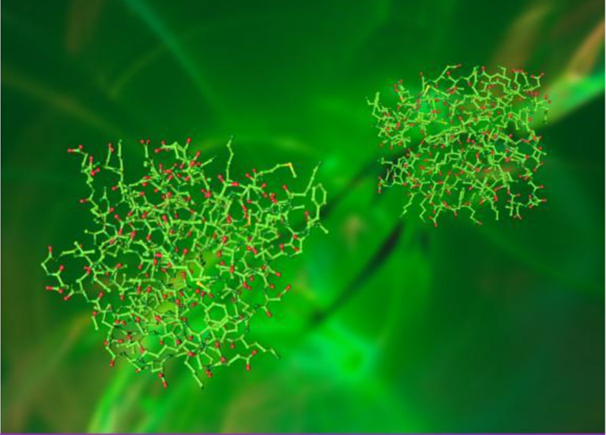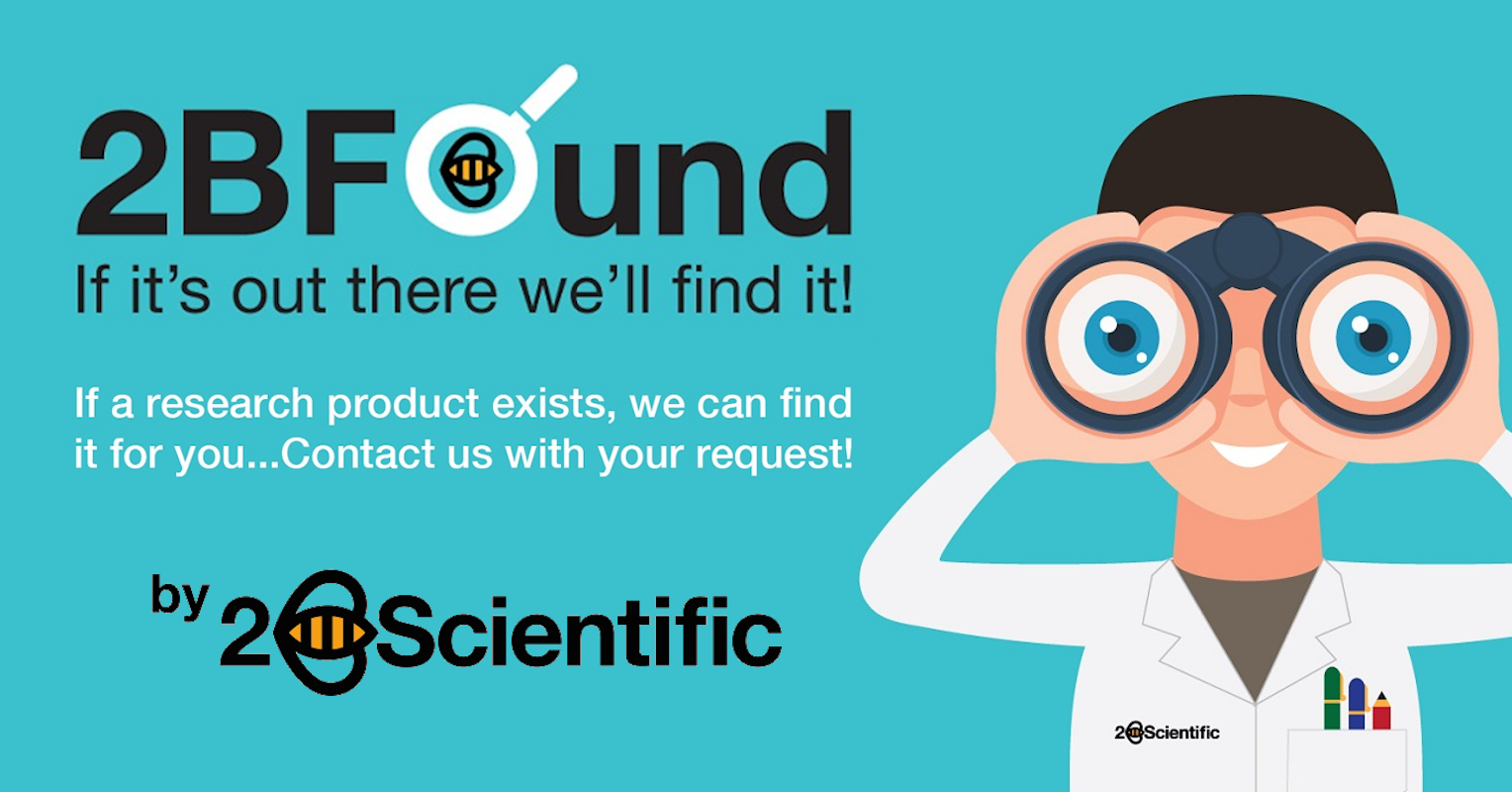See Vector Labs' Lectin Guide

Glycans are the key to numerous biological processes from cellular uptake to recognition, but their proper functioning depends on interactions with other macromolecules. In particular, cell surface glycans can mediate a cascade of cellular processes upon recognition by carbohydrate-binding proteins, such as antibodies and lectins. Although the mechanism of action behind glycan recognition is yet to be fully understood, what we have learned so far has enabled us to utilize these molecules to isolate, visualize, and interpret glycans. Lectins particularly became an effective research tool by the end of the 20th century. Their initial discovery involved immunohematology studies investigating how specific plant-derived proteins, hemagglutinins, could agglutinate red blood cells. Hemagglutinins from different seed extracts were found to agglutinate 1 of the blood types A, B, and O with no interaction with the other 2 (1). In the 1950s, Morgan and Watkins attributed differential agglutination to the hemagglutinins recognizing sugar chains on red blood cell surfaces (2). The ability of these proteins to distinguish between sugars granted them the term lectin, derived from the Latin legere, which means “to select” (3).
Today, the prevalence of lectins in glycan-related biological activities is widely accepted. Subsequent studies led to the discovery of endogenous lectins binding the organism’s own surface glycans. It also became clear that lectins were found not only in plants but also in other kingdoms, including animals.
Types of Lectins
There are, in fact, multiple ways of categorizing lectins based on their structures or the glycan chains that they preferentially bind. The most high-level classification involves the species of origin since lectins are found in various organisms. Lectins from different kingdoms differ not only in their binding properties and requirements but also in the applications they are used in.
Algal Lectins
Algal lectins are used widely in biomedical cancer and HIV research since they were found to exhibit anticancer and antiviral activity (4). While many lectins require a divalent cation for binding, algal lectins are exempt from this requirement. Furthermore, they usually have an affinity for glycoproteins instead of standalone monosaccharides.
Fungal Lectins
Fungal lectins are involved in the growth and development of fungal species, as well as in their symbiotic relationship with plants (5). This process, called mycorrhization, allows fungi to exchange resources with plants and depends on plant glycan recognition by fungal lectins. They are mainly found in mushrooms and, to a smaller extent, in microfungi, yeast, and mycelia (6).
Bacterial Lectins
Bacterial lectins can bind surface glycans at the terminal sugar or the internal oligosaccharide chains. You might recall from our Introduction to the Universe of Glycans blog post about the function of glycans that bacteria use the host surface glycans as a vehicle to invade the host cell. As expected, bacterial lectins, a.k.a adhesins, are crucial to this attachment since they recognize specific glycan sequences on their hosts (7). Besides pathogenic interactions, bacterial lectins play a critical role in symbiosis (8).
Animal Lectins
Animal lectins bind soluble glycoconjugates on cell surfaces, serving many functions, such as signaling pathways, cell-cell adhesion, regulation of protein levels in the blood, and immune defense against pathogens (9). They comprise carbohydrate recognition domains with a specific amino acid sequence while also requiring a divalent cation for the binding. Animal carbohydrate recognition domains (CRD) sequences usually contain 115–130 amino acid residues (10). In the next section, we will explore how animal lectins are categorized according to these sequences.
Plant Lectins
Plant lectins contribute not only to the development of plants but also to their interactions with the ecosystem. They are mainly responsible for establishing symbiosis with nitrogen-fixing bacteria while protecting plants against pathogenic microorganisms (11).
Plant lectins have sparked particular interest in biomedical research due to their abundance in nature and ease of isolation. More importantly, they were found to possess non-catalytic domains that reversibly bound specific glycan sequences. The majority of lectin-related research is geared toward plant lectins, with more than 500 types having been isolated by the end of the 20th century (12).
Classifying Animal Lectins Based on Carbohydrate-Binding Domains
Animal lectins exhibit great diversity in their carbohydrate-binding domains, which makes sense considering the diversity of glycans they need to recognize to carry out a large number of bodily functions. Through crystallization studies, scientists have characterized CRD sequences and grouped them according to similarities in CRD sequence motifs and structural properties. The 4 main types of animal lectins are C-type, P-type, I-type, and S-type, although recent studies have led to the discovery of other classes, such as M-type, L-type, chitinase-like, and F-type lectins.
C-Type Lectins
C-type lectins are animal lectins known for their Ca2+ dependence for binding glycans. They depend on Ca2+ to coordinate their amino acid residues to be able to bind the hydroxyl groups of sugars more easily. Found in macrophages, dendritic cells, and endothelial cells, C-type lectins are responsible for bacterial pathogen recognition, clearance, triggering of cytokine production, and other immunomodulatory processes that prepare the body for parasitic attacks.
P-Type Lectins
P-type lectins are highly specific towards mannose-6-phosphate. Some P-type lectins can have a single extracellular domain with a cation-independent site, while others have large extracellular domains with 2 Ca2++-requiring binding sites. These intracellular transmembrane proteins often facilitate the transport of intracellular enzymes, such as lysosomal enzymes, from the Golgi apparatus to other compartments.
S-Lectins
Also called galectins, S-lectins are characterized by their homologous S-carbohydrate recognition domains (S-CRD) with multiple glycan-binding sites and conserved cysteine residues, having specificity for β-galactoside ligands. They play a crucial role in cell growth, adhesion, and migration by interacting with the glycans in the extracellular matrix.
I-Type Lectins
I-type lectins share a common motif with immunoglobulin (Ig)–like domains that contain 2 β-sheets. These β-sheets comprise 70–110 amino acids each and are linked by several hydrogen bonds and a disulfide bond. The majority of I-type lectins bind sialic acid and are called sialic-acid binding immunoglobulin superfamily lectins (Siglecs). Their sialic-acid recognition sites enable them to bind sialic acid-containing ligands in natural killer (NK) cells, B cells, and T cells. That’s why they are hugely responsible for recruiting immune cells.
Plant Lectin Classification
Plant lectins are perhaps the best-studied ones owing to their wide distribution and ease of extraction. The broad scope of plant lectin research has also led to a more elaborate classification system. In fact, it is possible to classify plant lectins in 3 different ways.
Plant lectins can possess more than 1 carbohydrate-binding site. That’s why they are divided into 4 categories based on the number of binding sites:
Merolectins: Single carbohydrate-binding domain
Hololectins: 2 or more identical domains
Superlectins: 2 non-identical domains
Chimerolectins: An enzymatic domain + a carbohydrate-binding domain
Another way to classify plant lectins is by the crystal structures of the CRD, similar to the classification of animal lectins. Here, we come across 7 groups:
Amaranth family
Chitin-binding family
Cucurbitaceae phloem lectins
Legume lectins
Monocot mannose-binding lectins
Type 2 ribose-inactivating lectins
The third category is based on their binding affinity to specific carbohydrate moieties, which is why this grouping system is the most suitable for glycan profiling and quantification.
That said, initial categorization was incomplete due to relying only on oligosaccharides and disaccharides as binding moieties instead of more complex epitopes. A recent study by Mahal et al. proposes a more precise way to profile plant lectin specificity (13). The study used a machine learning algorithm and glycan microarray data to investigate binding specificity for 57 plant lectins, each of which fell into 1 of the following categories:
Complex N-glycan Binding Lectins
Core O-glycan Binding Lectins
Mannose Binding Lectins
Fucose Binding Lectins
Sialic Acid and Sulfate Binding Lectins
Terminal Gal and LacNAc Binding Lectins
Terminal GlcNAc and Chitin Binding Lectins
On a side note, although each lectin exhibits preferential binding to a specific glycan epitope, its specificity could be altered with the substitution or addition of glycan residues. For example, Phaselus Vulgaris-L (PHA-L) is a complex N-glycan Binding lectin with specificity towards β1,6-branched N-glycans; however, this specificity is reduced upon α2-6 sialylation.
In addition, some plant lectins can contain additional binding motifs. For example, the sialic acid-binding Maackia amurensis-II (MAL-II) predominantly binds α2,3-sialylated Galβ1−3GalNAc in O-glycans, but it also can recognize a 3’O-sulfated galactose epitope.
More on Lectin Classification and Function
Regardless of the species they are found in, lectins serve as companions for glycans, triggering a multitude of biological phenomena and maintaining a livelihood. Their responsibilities range from cell growth and development to cell adhesion and migration. In addition, they can recognize pathogenic cell surface glycans and trigger immunogenicity. Meanwhile, certain lectin classes—particularly plant lectins—are useful tools to elucidate the biological roles of glycans.
See 2BScientific's Lectin Guide
Article from Vector Laboratories, written by Shuhui Chen, PhD (https://vectorlabs.com/blog/everything-we-know-about-lectin-structure-classification-and-function.html)
